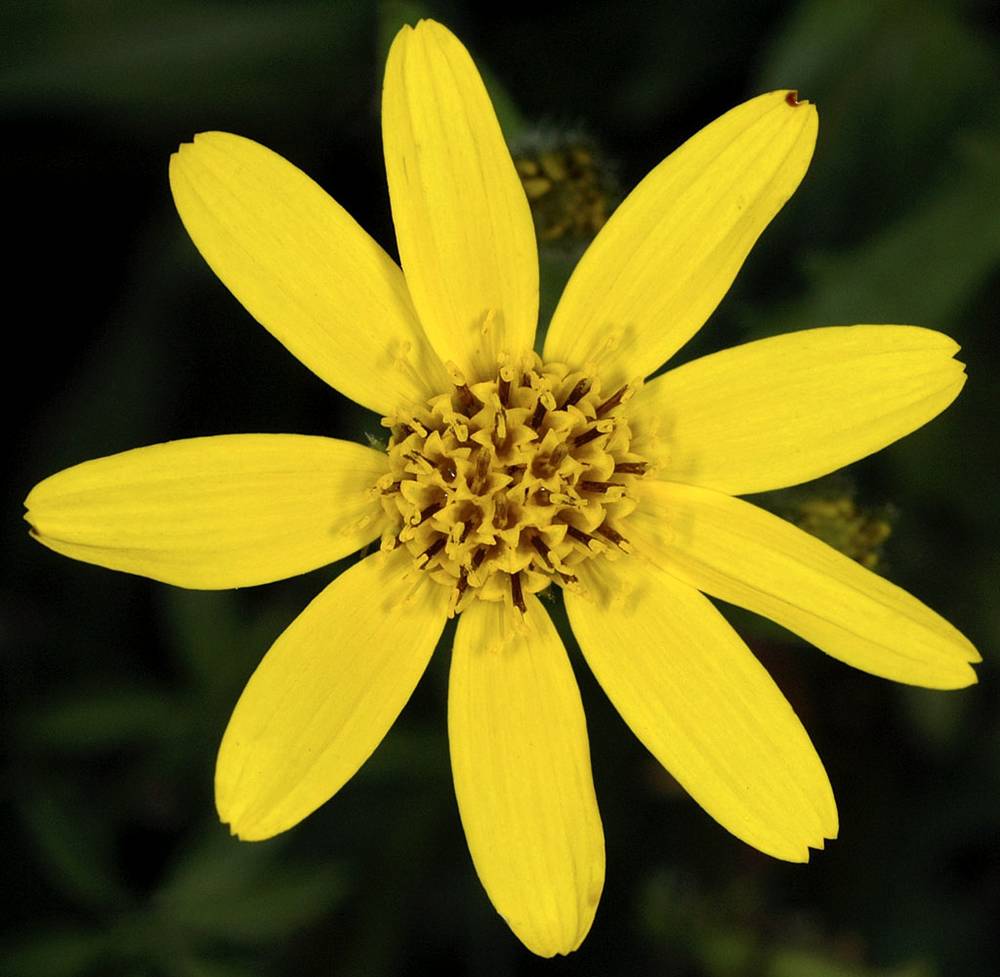
Plants 1–9 dm; rhizomatous.
Stems simple or branched, glabrous to villous or tomentose.
Basal leaves small, usually withering early.
Cauline leaves 4–10 pairs; blades ovate to lanceolate, elliptic-lanceolate, or oblanceolate, 2–12 cm, mostly 2–4 × as long as wide, bases attenuate to auriculate, sometimes connate-clasping, margins denticulate, crenulate, or serrate-dentate, rarely entire, veins branching laterally, tips acute, surfaces glabrous or spiculate to villous on margins and abaxial veins; short-petiolate or sessile.
Heads radiate.
Peduncles pilose, glandular-puberulent.
involucres campanulate to hemispheric, 10–18 mm.
Phyllaries broadly or narrowly lanceolate to lance-elliptic or linear, surfaces stipitate-glandular, sometimes pilose, often tomentose at bases.
Ray florets 5–17; rays 12–20 mm, yellow.
Disc florets 30–100+; corollas 5–11 mm, yellow.
Fruits cylindric, 4–6 mm, black, spiculate or hirsute; pappus bristles 6–10 mm, brownish, subplumose.
2n=38, 57, 76.
Marshes, wet rocky slopes, streambanks, alluvial shores, gravel bars, lakeshores. Flowering May–Aug. 0–2500 m. BW, Casc, CR, ECas, Est, Sisk, WV. CA, ID, NV, WA; north to AK, northeast to Alberta, east to WY, southeast to UT. Native.
The specific epithet lanceolata has priority over amplexicaulis, which has commonly been applied to this species.
as described under Arnica lanceolata ssp. prima
Leaves: basal commonly withered by flowering, sessile or subsessile to petiolate, blades usually oblong to narrowly lanceolate or oblanceolate, rarely ovate, margins subentire to prominently dentate-serrate; cauline sessile (bases sometimes partly connate-sheathing), blades narrowly to broadly lance-elliptic or ovate, margins subentire to serrate-dentate, faces sparsely to densely pilose. Phyllaries narrowly lanceolate. 2n = 38, 57, 76.Flowering May-Sep. Moist areas, along stream banks, snow-melt areas, montane to alpine meadows; 0-3000 m; Alta., B.C., N.W.T., Yukon; Alaska, Calif., Idaho, Mont., Nev., Oreg., Utah, Wash., Wyo.The name Arnica amplexifolia Rydberg (1900c) was a superfluous (illegitimate) substitution for A. amplexicaulis Nuttall (1841).